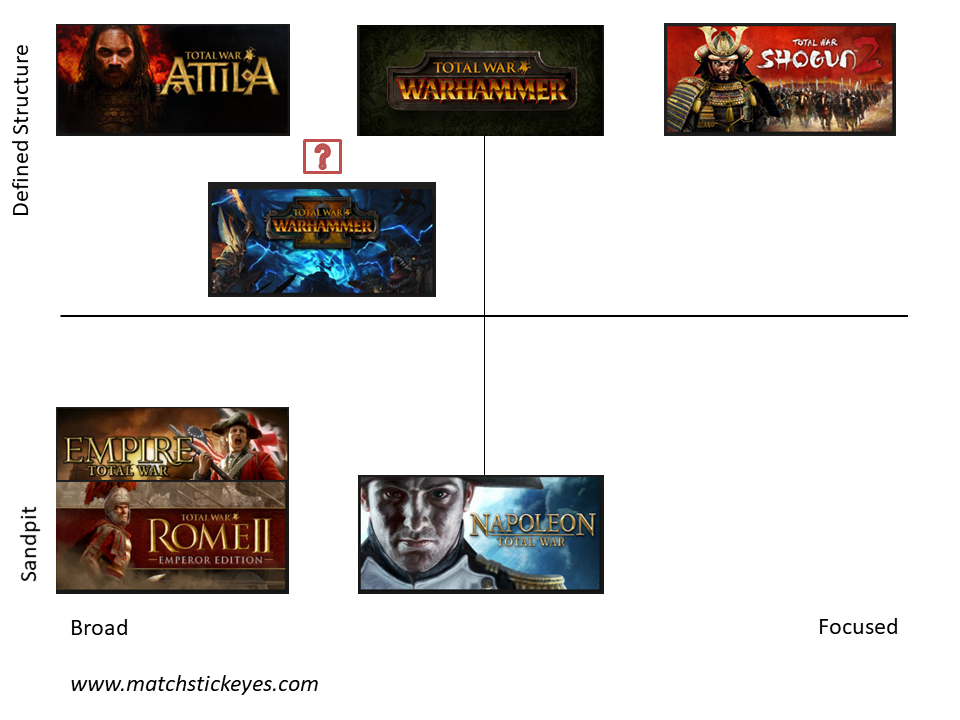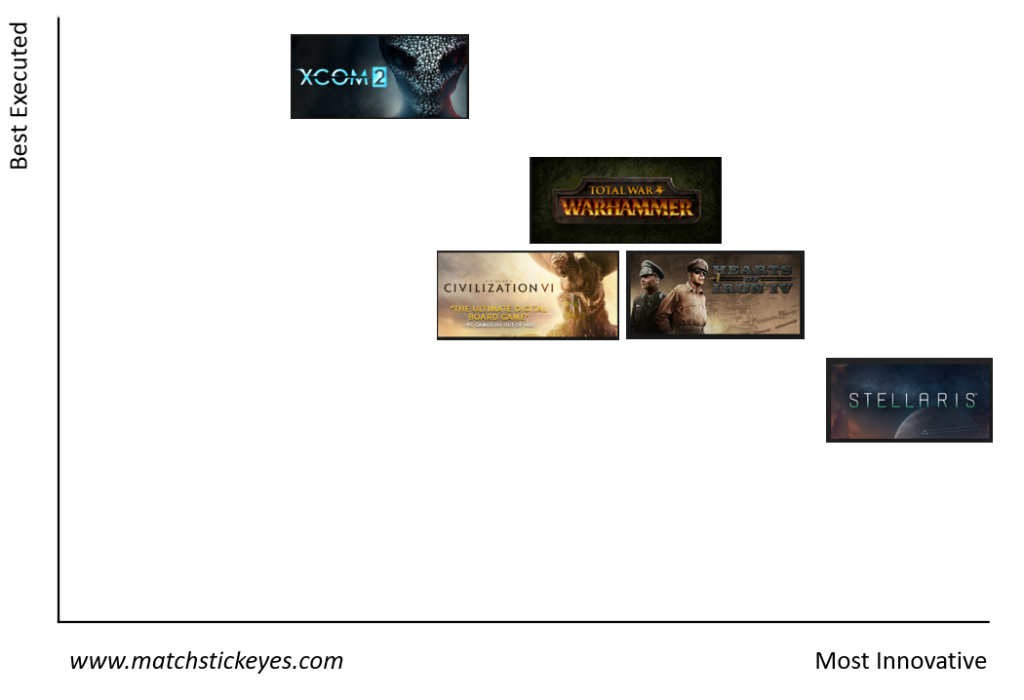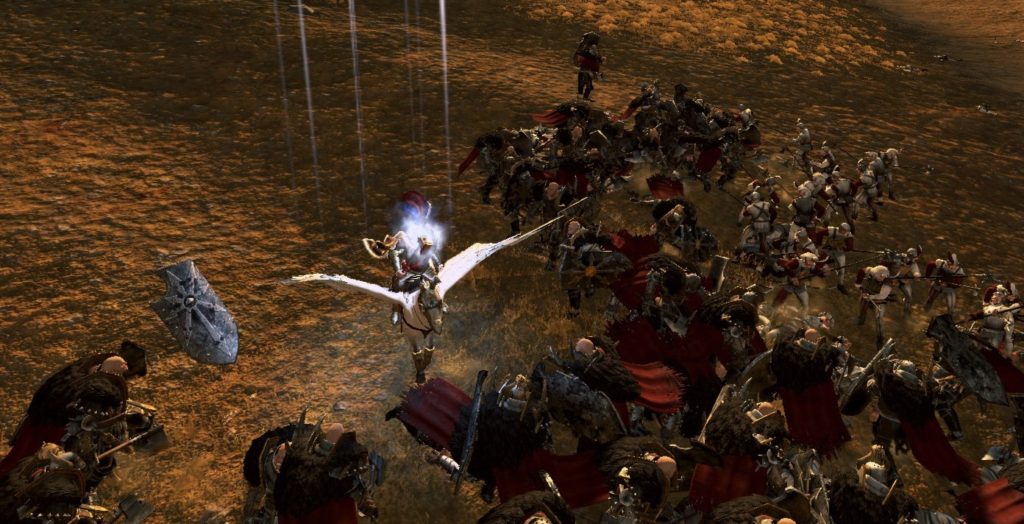Two different emperors prepare to defend their worlds. In Western Europe, circa 400 AD, a Roman emperor inspects his comitatenses and scholae, the successors to Caesar’s legions. A universe away, a different emperor raises his magic hammer, and beckons his griffon into the skies. They are united by circumstance — and the design of their respective games.
There is no one Total War design; there are several, differing by structure and scope. This is why different players prefer different entries in the series — the designers were trying to accomplish different things. (How well they succeeded is a different question.) I’ve created the following diagram to illustrate this:

Structure is measured along the Y-axis of the chart. Games towards the top (Attila, Warhammer I, Shogun 2) have a more defined structure, typically ushering the player towards a do-or-die endgame. Games towards the bottom are more open. Meanwhile, the chart’s X-axis measures scope. Games towards the right (Shogun 2) are smaller and more focused. Those towards the left are geographically larger, encompass more factions, or have more complex game mechanics.
The rest of this post explores, first, the categories that emerge, second, the ones that I prefer, and third, how this system relates to the future of Total War.
The categories
I divide the Total War games in the chart into several main categories:
- Rome II & Empire: the big, world-spanning games. These offer faction diversity and vast, exotic settings: Romans play very differently from Scythians, who play differently from Macedonian successor states. There are two downsides. The first is a less interesting late game, due to the lack of structure. The second is that these games appear harder to get right: both were plagued with problems at launch. Overall, they’re perhaps better as “toys” (something you play with) than as “games” (rules-based, win/lose activities). (Many of the older, pre-Empire games also fall into this category.)
- Napoleon: the little brother. Napoleon: Total War shed much of Empire’s scope by confining itself to Europe and the Mediterranean. While it added several features that became standard in later games, it still lacked the defined endgame that became increasingly common in its successors.
- Attila & Warhammer I: the pre-apocalyptic games. These games are structured around beating back a vast, powerful invader: the Huns in Attila, Chaos in Warhammer. Between the two, Attila offers a huge map—almost as large as Rome II’s—and complex empire management, while Warhammer dials this back to focus on conflict.
- Shogun 2: the most focused game. Shogun 2 combines limited scope with extreme polish, and I don’t think that’s a coincidence. The map is geographically more confined—and that makes it easier for the computer to put up a fight. There are fewer units — and each of them has its own useful, distinct niche. It also has the most structured endgame in the series, with the campaign culminating in a march to Kyoto against almost all of Japan.
- Warhammer II: still deciding… Warhammer II’s campaign is a race to cast a series of magic rituals, very different from Warhammer I’s struggle against impending doom. As of 100 turns, it feels more like the space race in Civilization— a defined goal that leaves the “how” up to the player. It also feels broader than its predecessor — the world is vast, intricate, and filled with varied factions.
My favourites
My favourites are structured around a challenge… I love Shogun 2 for its polish and elegance, its ruthless AI and climactic showdown. I also love the far more sprawling Attila for its “rage against the dying of the light” zeitgeist, the sense that I was defending civilisation by the skin of my teeth.
… at the same time, I appreciate the others. For all its flaws, Empire still holds a place in my heart for its depiction of the globalising early-modern world. Post-patch, Rome II also appeals when I want a taste of classical antiquity.
The future of Total War
I expect both “broad” and “focused” titles. One of the next two historical Total War games will take the series to a new setting — my guess is this will be large. The other will be the first “Total War Saga” — geographically smaller and focused on a “key, pivotal point in history”. No matter which scope you prefer, I expect there will be something for you!


